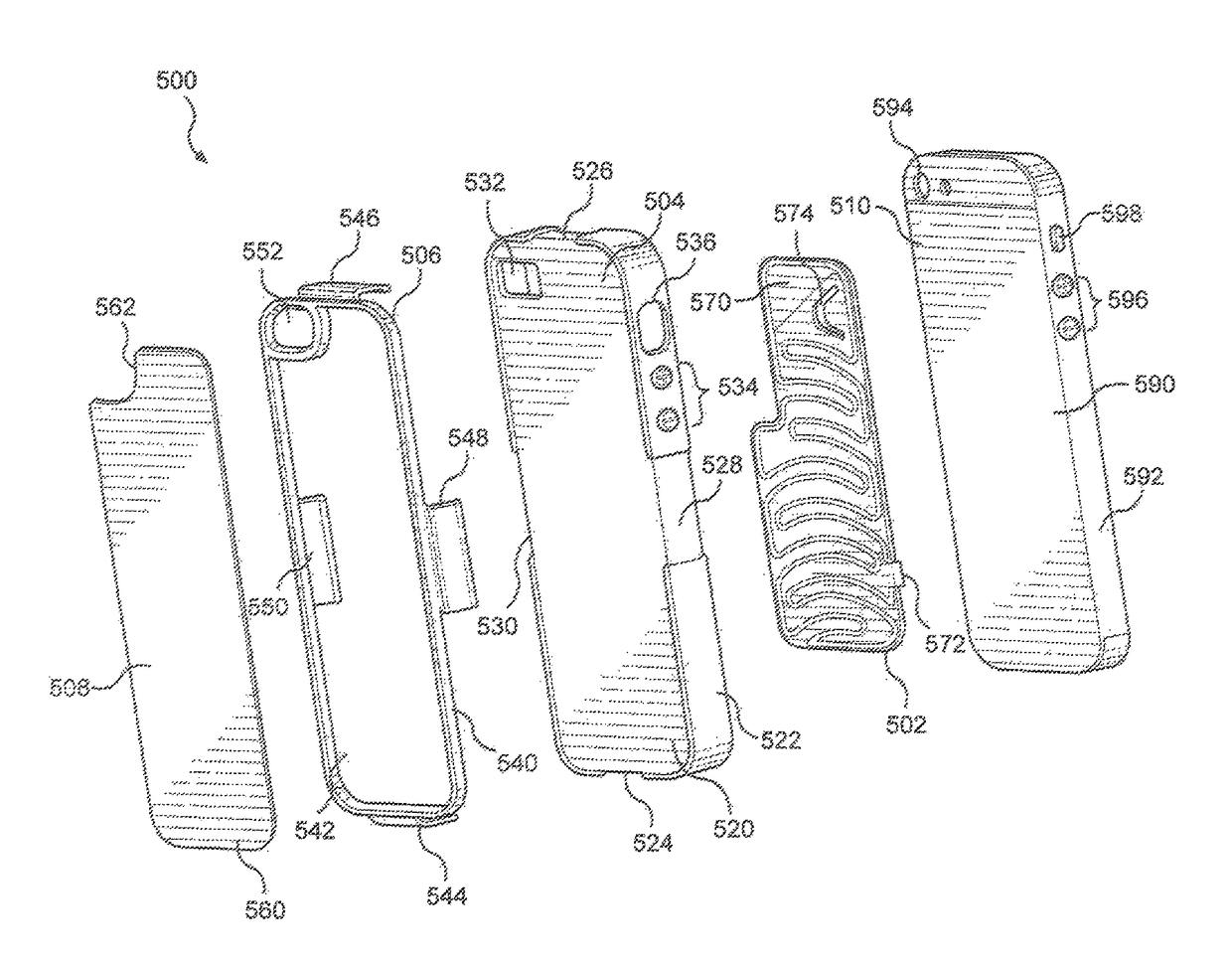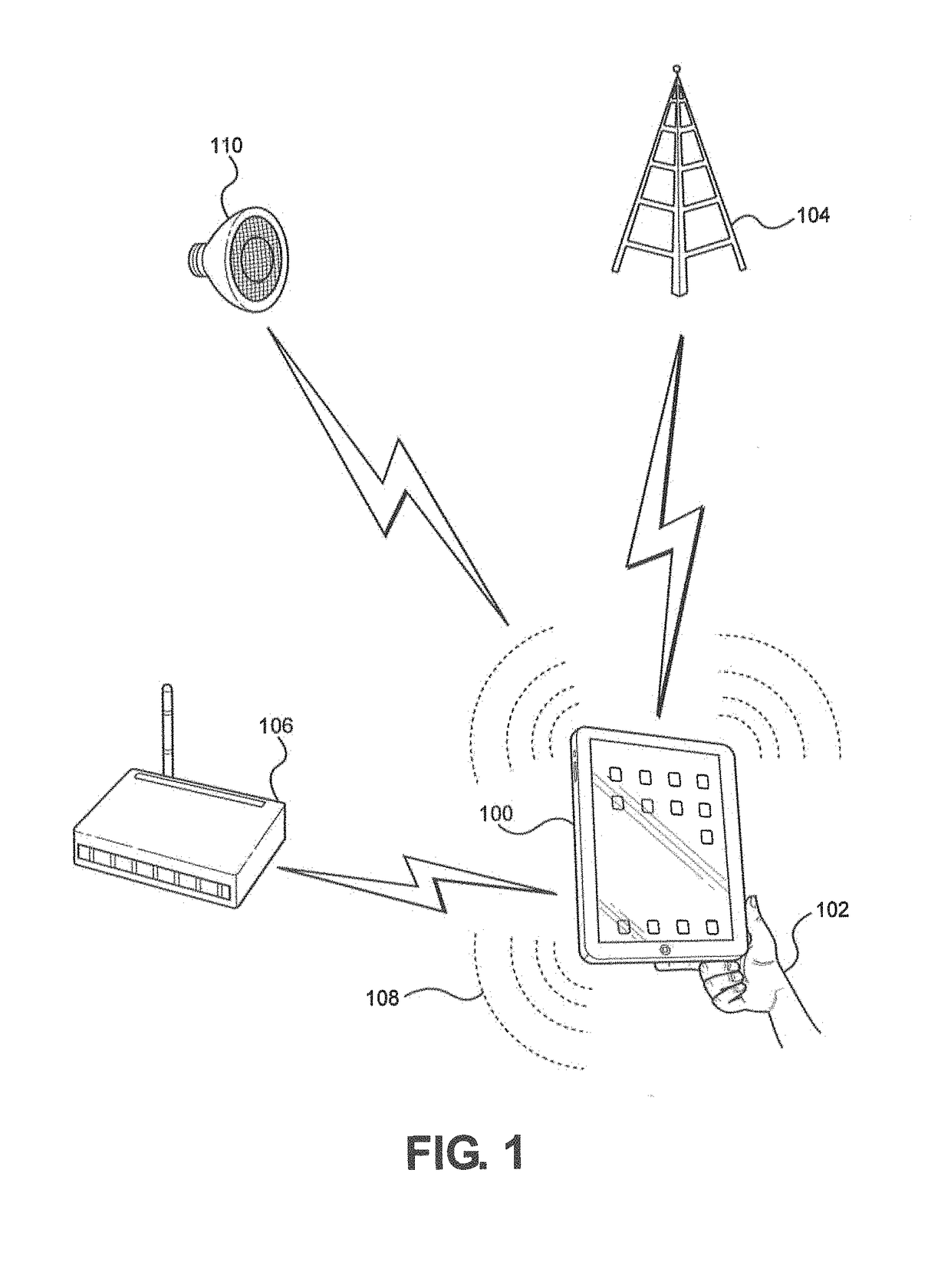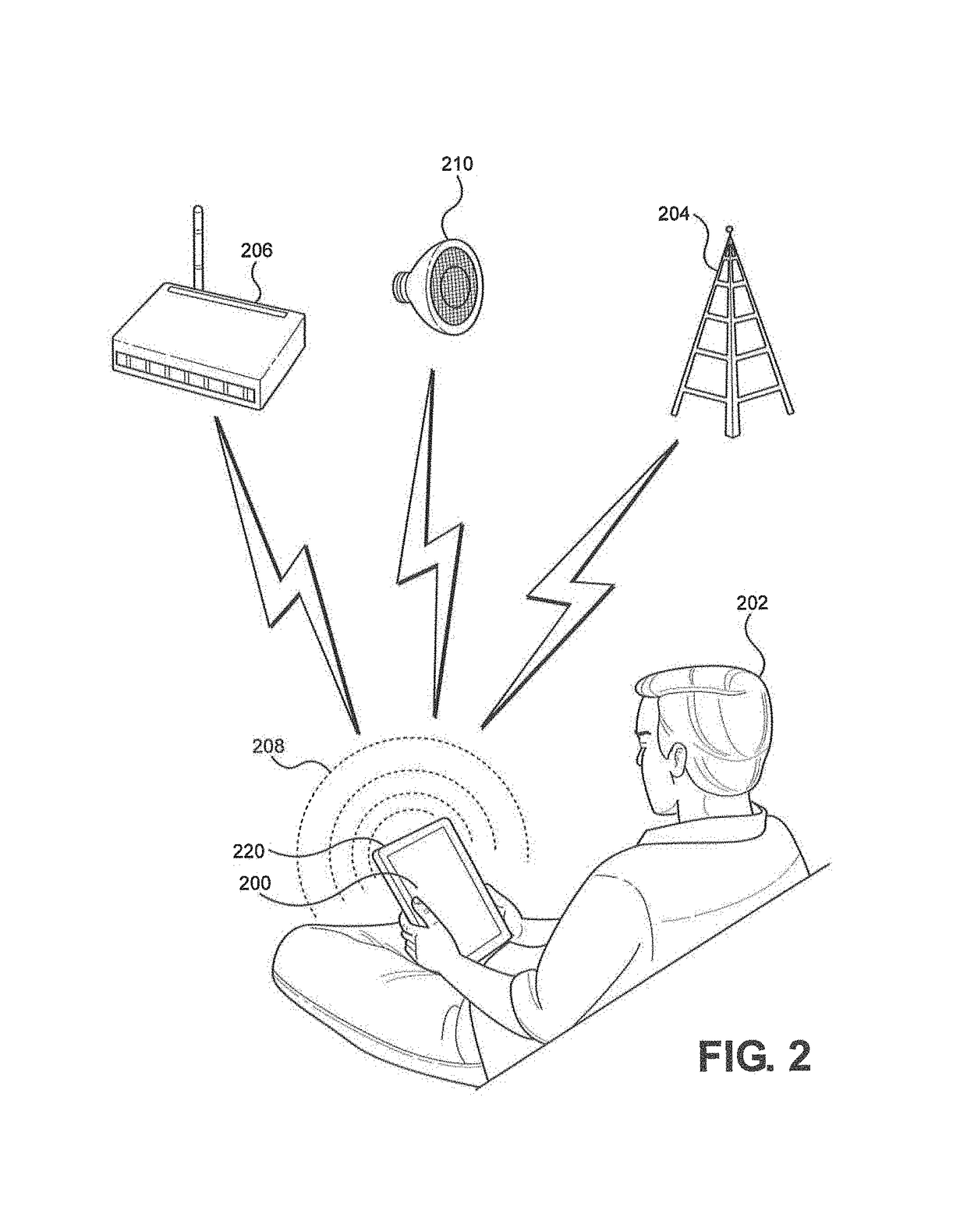Radio frequency emission guard for portable wireless electronic device
a technology of electromagnetic interference and radio frequency, applied in the direction of antenna details, electrical equipment, antennas, etc., can solve the problems of cancer, cellular mutation, cancer, other harmful effects, etc., and achieve the effect of optimizing available transmission paths and preventing electromagnetic interferen
- Summary
- Abstract
- Description
- Claims
- Application Information
AI Technical Summary
Benefits of technology
Problems solved by technology
Method used
Image
Examples
Embodiment Construction
[0043]The present invention provides a means to reduce the effects of the electromagnetic (EM) energy radiated from a portable wireless electronic device on the user, while maximizing the device's utility and functionality. The reduced EM field (EMF) and radio frequency (RF) energy experienced by the user resulting from the use of a wireless electronic device with the present invention installed decreases the potential for health problems caused by EM or RF energy on the person.
[0044]Referring initially to FIG. 1, an overall system diagram is shown, depicting a wireless electronic device 100 employed by user 102. Wireless electronic device 100 is further in RF communication with exemplary cellular tower 104 on a designated system such as GSM, 3G, 4G, or similar networks, in addition to RF communication with exemplary Wi-Fi hub 106 on a separate RF signal, such as IEEE standard 802.11 or 802.16 WiMAX, and Bluetooth™ system 110, such as an external speaker. The listed WiFi, cellular, ...
PUM
 Login to View More
Login to View More Abstract
Description
Claims
Application Information
 Login to View More
Login to View More - R&D
- Intellectual Property
- Life Sciences
- Materials
- Tech Scout
- Unparalleled Data Quality
- Higher Quality Content
- 60% Fewer Hallucinations
Browse by: Latest US Patents, China's latest patents, Technical Efficacy Thesaurus, Application Domain, Technology Topic, Popular Technical Reports.
© 2025 PatSnap. All rights reserved.Legal|Privacy policy|Modern Slavery Act Transparency Statement|Sitemap|About US| Contact US: help@patsnap.com



